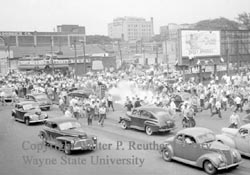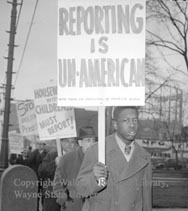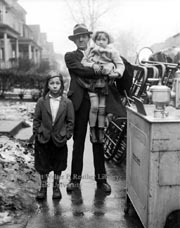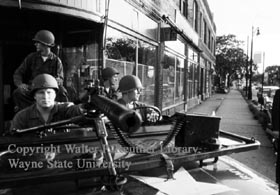
Army paratroopers patrol 12th street, July 1967.

Polio victims at Herman Kiefer Hospital being treated with iron lungs, Sept. 12, 1958.

Red Cross nurses preparing bandages during the influenza epidemic of 1918
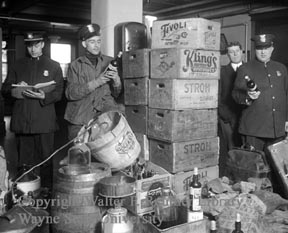
Police during prohibition raid admire a newly captured shipment, c. 1928.
|
During the 20th century sudden outbreaks of social upheaval, disease and economic disaster plagued the nation. The century had periods of great social unrest, and saw some of the most violent, and deadly riots in America’s history. Epidemics, such as the influenza outbreak of 1918 and polio in the 1950s, swept throughout the nation taking thousands of lives, and leaving others permanently disabled. Economic disasters, such as the Great Depression, sent Americans reeling into dark days of massive unemployment and uncertainty.
Detroit was not exempt from these sorrows. In many cases, it saw some of the worst of what the century had to offer. Because of the predominately industrial nature of its work force, Detroit had one of the highest rates of unemployment in the country during the Depression. Thousands were left destitute, and struggled to survive as best they could. Riots during the 1940s and the 1960s broke out in over 100 cities on large and small scales; however, it was the 1943 and 1967 riots of Detroit that took the greatest human toll and had the most serious social repercussions. Through each crisis, Detroiters proved themselves resolute, turning a brave face towards disaster and holding onto hope for better times tomorrow.
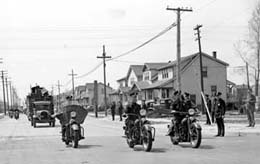
Michigan State Troops guard African-American families moving into the Sojourner Truth housing project, April 29, 1942.
|
|





